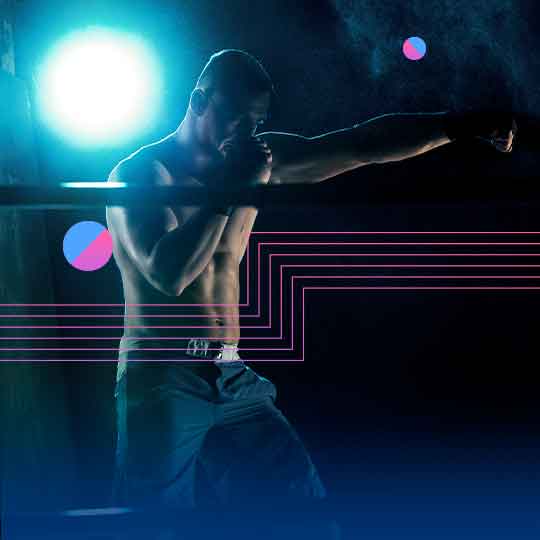Savate is a French martial art that involves hands and feet as the only weapon for defense and offense. It is also known as French boxing, French foot fighting, and French kickboxing.The modern formalized form is mainly an amalgam of French street fighting techniques from the beginning of the 19th century. Savate was then a type of street fighting common in Paris and northern France.
Today Savate is a significant and developed competitive sport. Savate has a ranking system marked by colors and you can find these on their gloves. In the past, there were different moves of boxing and kicking, wrestling, grappling, and weapon training that were involved in this sport. But today it only includes bare-handed techniques applied while standing or jumping.
History of Savate
The growth of boxing, wrestling and street fighting in the middle of the 18th century was a direct result of the economic and social changes brought about by the industrial revolution.
At the same time, in France, the fighting method of martial arts similar to English boxing started. In Paris, there was a special type of street fighting method, and it seems that sailors in French Navy developed a type of martial art called Chausson.
In Paris, there was this type of street fighting with the title of Savate, which in English means old shoe. During Napoleon’s time, French soldiers fought with their English counterparts using Savate.
In the 1820s, various activities were carried out to draw people’s attention to Savate. The most famous coach of this era was Cassaux Michel (1794-1869), who was born in Belleville neighborhood of Paris. He organized a type of street fighting method and called it Savate art. His teachings expanded to such an extent that great personalities such as the Duke of Arlan – Count Labatt – Lord Henry C. Moore and the famous artist Paul Gavarni were attracted to Savate.
Charles Lecour 1808-1894 was the most famous student of Cassoux. in 1838 Charles was a full-fledged fighter who combined English boxing with French street fighting and invented French boxing. Savate gradually spread in Europe – Africa – England – Canada and America, and then in the second half of the 19th century, with the mandatory physical training and gymnastics in the French army, Savate saw further growth.
One of the most famous and important champions of Savateurs during this era was Joseph Pierre Charlemont (1830-1914), who published the famous French boxing book in 1899. Joseph’s son, Charles Charmont (1862-1944) became famous by defeating the famous boxer Jerry Driscoll in 1899. At the beginning of the 20th century, Savate gained considerable fame in Western Europe. Because it was necessary for people to learn some simple self-defense. Even in the 1924 Olympic Games in Paris, Savate was present as a demonstration discipline.
It is good know that in the beginning of the 20th century, more than one hundred thousand people practiced Savate, although at the end of the Second World War, due to the special conditions of that time, there were only five hundred people who practiced Savate in the whole world. But after 1975, this sport was reborn in the world.
Since the beginning of the 19th century, the Belgian, French, and Italian savateurs fought with each other occasionally. On September 16, 1972, Comte Pierre Barrozzi founded the French Savate Federation in 1975.
three countries were invited to establish an international federation, but only two countries, Belgium and France, attended the meeting, and Italy was absent. On June 10, 1982, Pierre Sylvier, the vice president of the French Savate Federation, decided to establish the International Savate Union (U.I.B.F.). but again, this project was not successful. In 1985, Alexandre Wallmeer of Belgium organized international competitions in which athletes from Europe, Africa, America and the Middle East participated.
In this year, Pierre Giraud, the president of the French Savate Federation, decided to form the International Savate Federation in the center of Paris with the presence of representatives of 11 countries.
Belgium – Cameroon – France – England – Holland – Italy – Morocco – Mauritania – Senegal – Tunisia and Yugoslavia were the countries he wanted and at the same time 3 countries Germany – Spain and Ivory Coast apologized for their absence in this meeting. At the end, in this meeting, Jean-Marie Rousseau was elected as the first president of the Savate International Federation, and two languages, French and English, were introduced as the official languages of this federation.
savate levels
savate provides for three levels of competition
Assaut requires the competitors to focus on their technique while still making contact; referees assign penalties for the use of excessive force.
Pre-combat allows for full-strength fighting so long as the fighters wear protective gear such as helmets and shin guards.
Combat, the most intense level, is the same as pre-combat, but protective gear other than groin protection and mouthguards is prohibited.
The ranking of savate
Technical road: blue glove, green glove, red glove, white glove, yellow glove, silver glove I, silver glove II and silver glove III (violet glove for those less than 17 years of age).
Competition road: bronze glove, silver glove I, silver glove II, silver glove III, silver glove IV and silver glove V
Referee ranking: Juge arbitre stagiaire, Juge arbiter.
All kinds of Savate competitions
Savate Championships were hold in two disciplines: Savate Assault, Savate Combat
Savate Assault
In this type of competition, the level of skill of a fighter in the implementation of techniques and his precision in the implementation of strikes are desired, and the strength when striking is not the criterion.
Savate Combat
In this type of fighting, the technique, accuracy and effectiveness of the blows and the spirit of the fight are evaluated, which are divided into two types based on gender and technical level:
– A. The second group of Combat competitions are those in which the use of head protection is mandatory, and the skill level of a fighter and the spirit of the fight will be considered by the judges.
– B. The first group of Combat matches includes matches in which head and foot protectors are not used, and the only criterion for the judges is the difference in the value of the techniques.




بدون دیدگاه